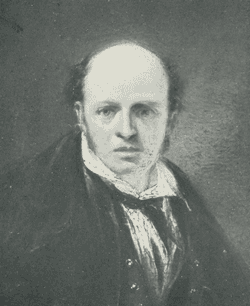Robert Lucius West facts for kids
Quick facts for kids
Robert Lucius West
|
|
|---|---|

Self portrait
|
|
| Born | circa 1774 Dublin, Ireland
|
| Died | 24 January 1850 (aged 75–76) Dublin
|
Robert Lucius West (born around 1774 – died January 24, 1850) was an Irish artist. He was also a skilled draughtsman (someone who draws plans or designs) and a teacher. He is known for his portraits and for leading a famous art school in Dublin.
Contents
Robert West's Early Life
Robert Lucius West was born in Dublin, Ireland, around the year 1774. Art was in his family! His father, Francis Robert West, was an artist, and his grandfather, Robert West, was also a painter. Both his father and grandfather were important teachers at the Dublin Society figure school. This school taught students how to draw human figures.
Robert followed in their footsteps. He studied art at the same school under his father. He was a talented student, winning prize medals in both 1795 and 1796. Robert West never married. He passed away on January 24, 1850, and was buried in Mount Jerome cemetery in Dublin.
Robert West's Art Career
Robert Lucius West showed his first artworks in 1800. These were two paintings: Portrait of a gentleman and Portrait of a young lady. At this time, he was working as an assistant to his father at the Dublin Society drawing school. He continued to show his paintings with the Society of Artists of Ireland in 1801 and 1802.
In 1807, his portrait of John Foster won him a special prize of 50 guineas (an old type of British money). Robert used this money to travel to London to study art even more. He exhibited his work at the famous Royal Academy in 1808. When he came back to Dublin in 1809, he officially became his father's assistant at the figure school.
Becoming a School Master
When his father passed away in 1809, Robert volunteered to run the school. He hoped to become the new master, just like his father and grandfather before him. However, the Dublin Society's committee wanted to find a new master who was even more skilled. They chose an artist named George Grattan.
Even though the committee agreed on Grattan, the members of the Dublin Society voted. They chose Robert West for the position with 67 votes to Grattan's 29. So, Robert became the new master of the figure school! Grattan received 100 guineas for his trouble.
Exhibitions and Specializing in Portraits
Robert West continued to show his art with many groups. These included the Artists of Ireland and the Royal Hibernian Academy (RHA). He was a founding member of the RHA in 1823. He showed many paintings at their first exhibition in 1826.
Around this time, Robert started to focus on painting portraits, especially military officers. Some of his well-known works include Portrait of an officer of the 14th Light Dragoons (1809) and Portrait of Captain Hemmings, 58th Regiment (1811). He also painted religious scenes, like The crucifixion (1826) and The assumption of the Virgin (1828). He regularly exhibited his art with the RHA throughout his career.
Later Career and Retirement
By 1830, some people on the Royal Dublin Society committee were concerned about how Robert was running the figure school. They felt his work was not meeting the expected standards. For a short time in 1838, he took over from Henry Brocas as the master of landscape and ornament, until Brocas' son, Henry, took over.
As time went on, many people believed that Robert's father had been a better draughtsman. By 1845, Robert's success as an artist was not as strong. He asked to retire in January 1845 and was given a pension of £60. After he retired, he still showed paintings at the RHA, but they were not as popular. In 1846, an art magazine even suggested that "a timely retirement would be judicious."
Selected Works
- Portrait of John Philpot Curran (1827)
- Portrait of a Highland officer (1831)
- The ancient gateway at Glendalough (1846)
- Dunbrody abbey, Wexford (1848)

